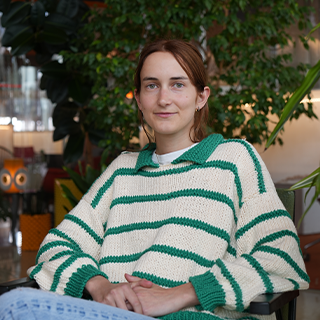Robots belong in the kitchen: the rise of the food tech industry in 2021

They can’t instantly whip up pesto eggs or baked feta pasta just yet, but robot chefs are having a moment. According to TechCrunch, Chef Robotics, the startup behind a robot able to handle all commercial kitchen tasks just raised $7.7 million to help automate kitchens, which will increase production and consistency while wasting less food—ultimately saving restaurants money.
Meanwhile, online food delivery platform DoorDash recently purchased Chowbotics whose ‘Sally’ robot preps on-demand salads and bowls, and American fast food restaurant chain White Castle expanded a partnership with Miso Robotics whose ‘Flippy’ bot makes chips. To put it simply, demand for robot chefs boomed during the pandemic as businesses looked to decrease human contact. In order to fully predict the future of the food tech industry, we looked at the most promising robot chefs and exactly what improvements they have to offer foodies in 2021.
Chef Robotics
“At Chef, we believe and are working to create a future where we all have an opportunity to self-actualize our highest potential, to be innovative and creative, to lead others, to create art, and to love others. In other words, we want to empower humans to be, well, human!” reads Chef Robotics’ manifesto. The product team includes ex-employees of Cruise, Google, Verb Surgical, Zoox and Strateos.
Chef’s team isn’t quite ready to show off its product just yet, which is not entirely unusual for a robotics company still in the early stages. What it has promised so far is a robotics and vision system destined to increase production volume and enhance consistency, while removing some food waste from the process. Fast food restaurants appear to be a key focus for this sort of technology.
“Chef is designed to mimic the flexibility of humans, allowing customers to handle thousands of different kinds of food using minimal hardware changes. Chef does this using artificial intelligence that can learn how to handle more and more ingredients over time and that also improves. This allows customers to do things like change their menu often. Additionally, Chef’s modular architecture allows customers to quickly scale up just as they would by hiring more staff (but unlike humans, Chef always shows up on time and doesn’t need breaks),” explains the company’s website. No doubt we’ll be getting more details on the underlying tech very soon.
Chowbotics
Chowbotics’ refrigerator-sized robot Sally can assemble custom bowls on-demand from fresh ingredients protected in an airtight, refrigerated container. “It’s innovative technology that makes convenient fresh foodservice possible anytime, anywhere,” reads the company’s website, now owned by San Francisco-based DoorDash, as mentioned above.
Before 2021 came along, Chowbotics had sold around 125 of its $35,000 robots, mostly to universities, medical centres and grocery stores. But the company said sales jumped during the COVID-19 pandemic as customers looked for touch-free ways to dispense food.
So why exactly would the food delivery market leader that offers delivery from 390,000 merchants in the US, Canada and Australia buy a robotics company? According to ABC News, DoorDash said Chowbotics’ robots could allow its restaurant partners to offer more varieties of meals without having to expand their kitchen space. Other DoorDash merchants, like convenience stores, could also use it to expand into fresh food.
Miso Robotics
From a Pasadena garage to White Castle kitchens, Miso Robotics’ Flippy was initially created as a burger-flipping robot and can now also cook chips to perfection. No wonder it got a position at the American regional hamburger restaurant chain, right?
At the time of the partnership’s announcement, White Castle Vice President Jamie Richardson explained how the robot can free up employees for other tasks like disinfecting tables or handling the rising number of delivery orders. “A touch-free environment that minimises contact is also increasingly important to customers,” he said.
It was reported by AP News that Flippy currently costs $30,000, with a $1,500 monthly service fee. “By the middle of next year [2021], Miso hopes to offer the robot for free but charge a higher monthly fee,” reads the article which was published in July 2020.
Moley Robotic Kitchen
Now, this one is pretty special. In January 2021, London-based robotics company Moley announced that it will begin selling the first robot chef, according to the Financial Times. The company explained that its ceiling-mounted device called the Moley Robotics Kitchen will be able to cook over 5,000 recipes and even clean up after itself when it’s done. Bonus? The technology is built for at-home service, not in restaurant kitchens like the ones mentioned previously.
The Kitchen, which took six years to develop, consists of two robotic arms that glide along a track installed in the ceiling of a customer’s kitchen. The arms are fitted with two articulating hands that can recreate the actions and movements of professional chefs, which have been uploaded into its memory. Back in 2017, the robot chef could only make one dish: crab bisque. Now, it will come pre-programmed with thousands of recipes. All you need to do is simply select what you want to eat on a touchscreen, and let it get to work.
Of course, there are still skills the robotic kitchen hasn’t mastered just yet. While it can crack an egg, it isn’t yet capable of peeling a potato or dicing carrots. Because of this, you’ll need to handle some of the prep work yourself, and then lay out the pre-weighed ingredients on the counter or in its smart fridge for it to work its magic.
The machine, which can be fully customised to blend right into your kitchen, starts at £248,000, but Moley hopes to introduce slightly more accessible models in the future.
Blendid
Blendid’s smoothie-making robot kiosk can make 45 smoothies in an hour, which customers order touch-free through their phones in locations such as Walmart and college campuses in the US. This year, the company behind the ultra-fast smoothie-maker is looking to expand its franchise in more supermarkets across the country. Forget about your go-to overpriced green juice from your neighbourhood’s coffee shop—Blendid’s drinks are sold between $5 and $6 maximum.
F&P Robotics
F&P Robotics’ ‘Barney’ is a robot bartender that can also tell jokes. The robot can mix up to 16 different spirits and eight different sodas for customers who place their orders via their smartphones, as well as offering beer and prosecco. Once the drinks are ready, Barney, who can disinfect his own robotic arm, by the way, tells clients their drink is ready via a large video display above the bar. A barista version making different coffees has also been developed.
One thing is for sure, the future of the food tech industry is looking bright, and whether you’re looking forward to hearing Barney’s dad jokes or not… it certainly looks like you won’t have much of a choice. Buckle up!





